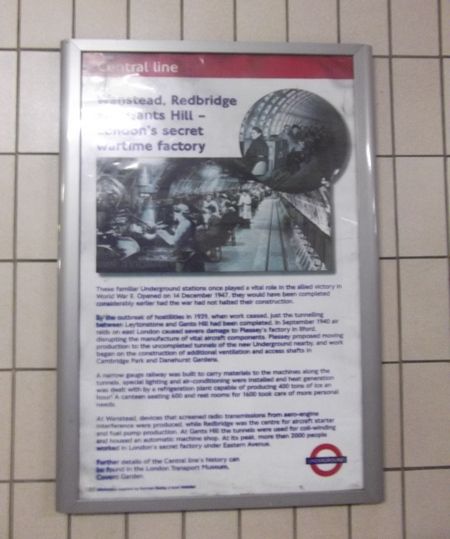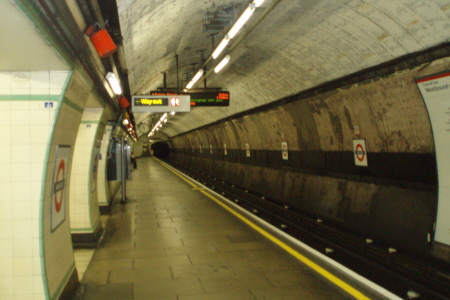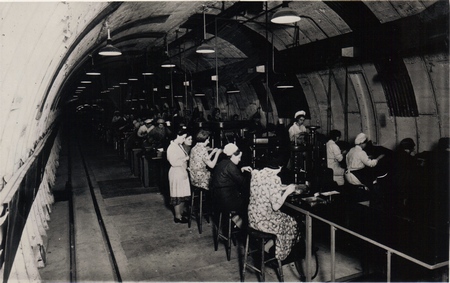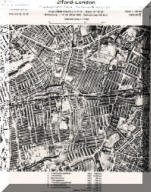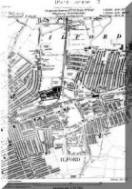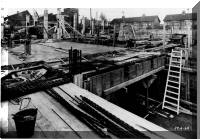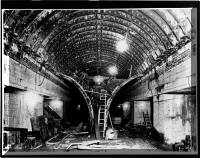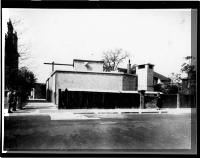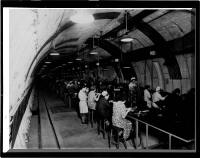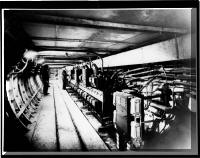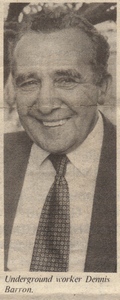|
Story in Ilford Recorder (1985):
Valerie Green
FORTY years ago on
Wednesday, the Allies
celebrated VJ Day — which meant that the
worst war the world had ever known had
come to
an end?
And for 2,000-odd
Redbridge workers dawned
the realisation that their
sub-terranean working
days and nights were also
over.
These men and women
had done their bit for the
war effort in Britain's most
successful underground
factory — converted
Central Line tunnels linking
Redbridge, Gants Hill
and Wanstead stations.
Here Plessey's "secret
army" — the factory was one of the
most closely guarded wartime production secrets — turned out
vital components for the aircraft industry, such as fuel pumps and engine
starters.
With the approach of
war, the company had outgrown the
Ilford site and additional
space was found in Swindon,
Walthamstow
and Cardiff.
Then in 1942 came the
chance to take over the
unused Central Line extension.
Constructed before the
war but never brought into
passenger service, the five
miles of twin tunnels
between the three stations
became vast production
lines. Where today's commuters
hear the rumble of trains, assembly workers
once laboured for victory against a
background hum of drilling and
cutting machines.
A narrow gauge railway
was laid in the tunnels running past
the workers on their
machines, distributing
materials and
collecting finished articles.
Passengers were not supposed
to be carried on the
"trains", but the line
proved to be an ideal means
of taking visiting VIPs on
inspection tours.
|






